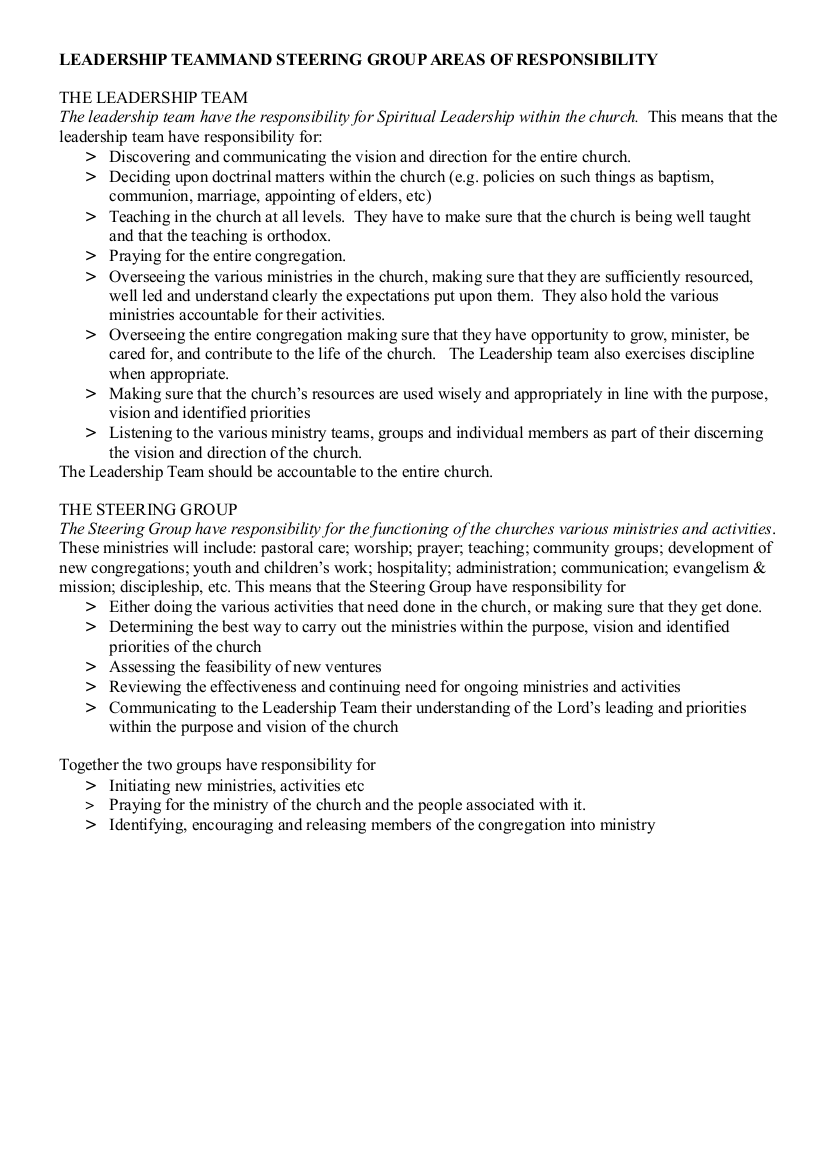The Steering Group
The new church in Stockethill had begun as the work of small group of church planters. Theirs had been the inspiration, the planning and praying. The church planters had come with their own preferences for church and discipleship, ideas that they hoped would in some respects break the mould of traditional church practices. At the same time, they were also committed to finding and nurturing a form of church that was suited to the particular community in which it was to be planted. Both these influences would seem to be necessary for a church plant. On the one hand, inspiration and leadership is needed. Without this nothing will happen. On the other hand, the new church needs to be suited to the people and community in which it is to grow and so it will be necessary for local people to have ownership of their church. Unpalatable questions of power and possession can easily come into play and need to be faced.
For Stockethill, the initial church planting team had been cautious about involving people in the leadership of the church too quickly. Ian speaks of a concern that such responsibility would be too much - an unnecessary burden for people who had had either only recently come to faith or had had their faith reinvigorated. The matter was made more difficult in Ian’s mind because of the importance of the church staying true to the distinctive path that the planting team had followed. Few of the new members of the church came with no prior experience of other churches and that prior experience could hinder the ability of the new church to innovate in its local context. Using admittedly difficult language, that prior experience was spoken of as a ‘toxicity’: in order for people to contribute to new forms of church they had to recognise and put to one side the assumptions they carried that had come from traditional ideas about church, they needed to ‘detox’. Inviting them to share in the leadership of the new church risked losing the distinctive character of the new church and returning it to unhelpful but familiar practices.
At the same time the church planting team felt pressure to demonstrate to others in the wider church that their work was ‘successful’, and what seemed the inevitably slow process of sharing their vision and allowing others to participate in it was not immediately appealing.
What was decided was to create ‘The Steering Group’. The purpose of this seems to have been to begin to develop local leadership through a consultation group. Members were chosen because they had already found themselves committed to the church and involved in responsibility for practical tasks. The document below (Fig.1) illustrates the relationship of the Steering Group to the leadership and makes clear how the leadership team intended to retain decision making responsibility. All the participants in the video show awareness of this relationship, both in terms of the stated nature of the group and from the frustration felt by the Steering Group at times during actual discussions when they were aware that though they were asked for their opinions the leadership team would make their own decisions.
The members of the Steering Group were aware and grateful that this new church existed through the ministry of Ian and the Leadership Team. It is a sign of the success of the initial plant that already the members had come to identify themselves with it: this was their church. And further, they could be protective of the Leadership Team, being willing to take on responsibility rather than see Ian ‘burdened’ with everything.
What had been so important at the outset of the work though, a close knit and supportive church planting team, could now begin to seem exclusive to those outside of the group. Even the process of expanding that group, through inviting others onto the Steering Group, did not solve the problem because on the one hand the Leadership Team retained for the time being its boundaries and power and on the other hand inviting people onto the Steering Group still created an exclusive circle.
This period was one of transition and growth. It may well be that the Steering Group was in some respects a misstep, particularly with regard to how it was framed and presented to its participants in terms of power. Ian himself wonders whether the use of a wider congregational conversation might have been more helpful, affirming that every voice counts. On the whole, whilst there were some strained moments at the time, and perhaps still are, the members of the Steering Group formed a close bond and have kept it. In the matter of church planting, there are few experts. Growth is needed and to be expected and comes with its pains. Ian acknowledges he grew in leadership through this and the church has grown in its capacity to live together and forgive.
As was said at the outset, this was a significant period in the life and growth of the church. An in-depth and ongoing conversation needed to occur between the church planters and the local people of the church and community and this had to involve growth, give and take and inevitably mistakes. In Stockethill, the conversation may not always have been harmonious, but the conversation was occurring and would continue to do so as the church moved to call people onto the Leadership Team.
Fig. 1
